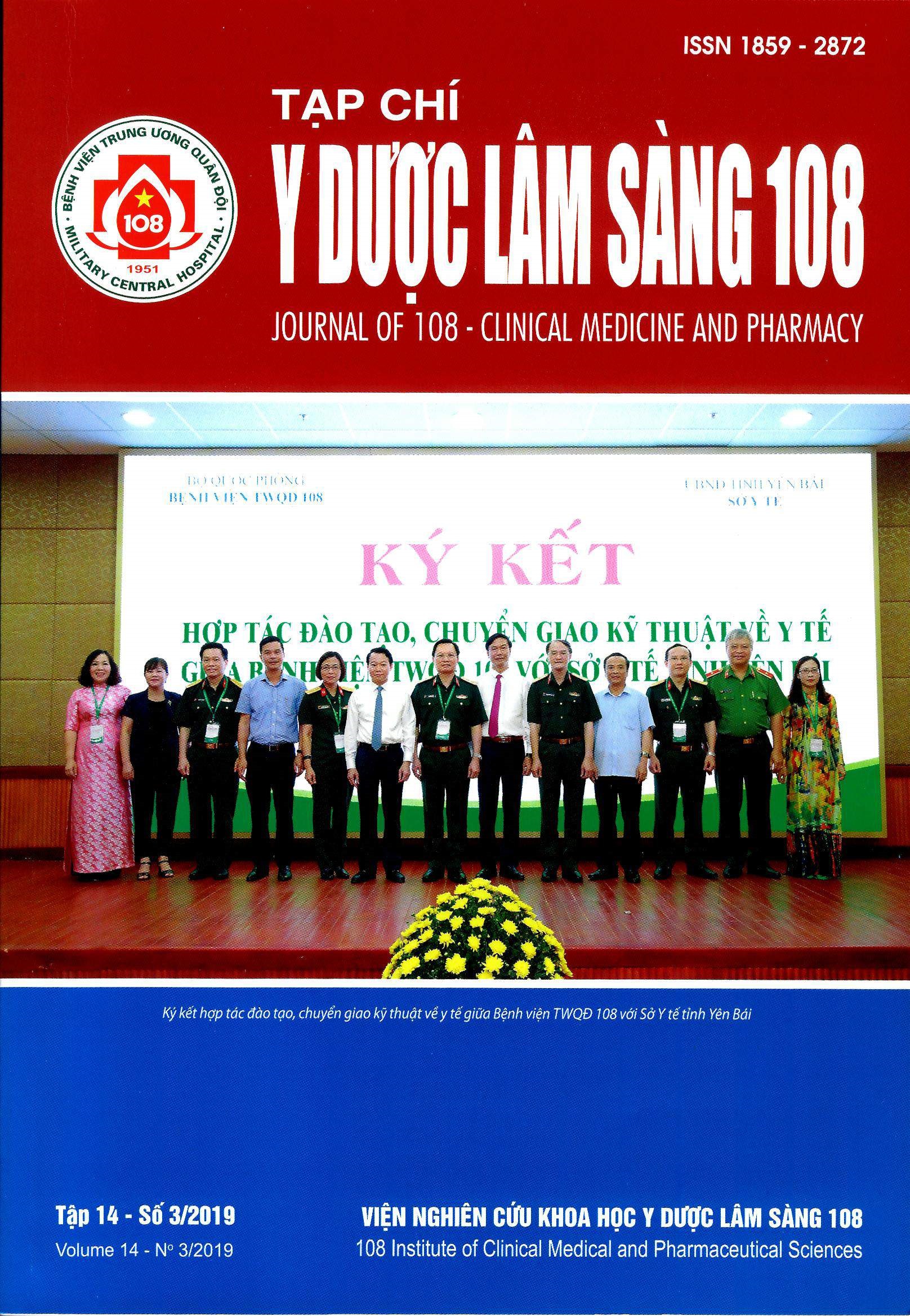Application of tumor marking technique and sentinel node biopsy in breast cancer treatment at Nghe An Oncology Hospital
Main Article Content
Keywords
Abstract
Summary
Objective: To evaluate the application of tumor marking technique and sentinel node biopsy in breast cancer treatment at Nghe An Oncology Hospital. Subject and method: From January 2017 to October 2018, we prospectively conducted 37 cases early breast cancer were treated with sentinel node biopsy (SNB) followed by completion axillary lymph node dissection (ALD). All sentinel and nonsentinel nodes were examined intraoperatively with frozen section and imprint, postoperatively with H&E staining. Identification and false-negative rate were defined. The value of this procedure is based on sensitivity, specificity, negative predictive values (NPV) and the accuracy. Result: The mean age was 50.7. Most tumors (83.8%) located at the upper lateral quarter. The mean diameter of tumors was 2.3cm, 70.3% patients were at stage IIa. Invasive ductal carcinoma accounted for 89.2%, histological grade 2 accounted for 67.5%. Sentinel node detection rate was 97.3%, in which 87.5% were determined by the radioactive method combined with color indicator, 12.5%. The mean number of sentinel node detected was 2.11 ± 0.75. Sensitivity was 100%, specificity was 96%, positive predictive valure was 91.7%, negative predictive value was 100%, overall accuracy value was 97.2%, false negative rate was 3.8%. Tumor diameter, histological grade did not affect the sentinel node detection rate. Conclusion: SNB with the radioactive method combined with color indicator is a safe and reliable technique with high accuracy in axillary staging for early breast cancer patients. This procedure is useful in early breast cancer treatment, reducing unnecessary axillary lymph node dissection for patients.
Keywords: Sentinel node biopsy (SNB), axillary lymph node dissection (ALD).
Article Details
References
2. Trần Tứ Quý (2009) Nghiên cứu tình trang di căn hạch gác trong ung thư vú giai đọan I-IIA. Luận án Chuyên khoa cấp II, trường Đại học Y Huế.
3. Trần Văn Thiệp, Trương Văn Trường, Huỳnh Hồng Hạnh và cộng sự (2010) Sinh thiết hạch lính gác trong carcinoma vú giai đọan sớm 0-I-II. Tạp chí Y học thành phố Hồ Chí Minh, Phụ bản tập 14, Số 4, tr. 441-452.
4. Vũ Kiên (2015) Nghiên cứu tình trạng di căn hạch gác bằng dược chất phóng xạ làm cơ sở xác định phương pháp phẫu thuật ung thư vú giai đoạn I, IIa. Luận án Tiến sỹ y học, trường Đại học Y Hà Nội.
5. Ferlay J, Shin HR, Bray F et al (2010) Estimates of worldwide burden of cancer in 2008: GLOBOCAN 2008. Int J Cancer 127: 2893-2917.
6. Giuliano AE, Kirgan DM, Guenther DM et al (1994) Lymphatic mapping and sentinel lymphadenectomy for breast cancer. Ann Surg 220: 391-401.
7. Krag DN, Anderson SJ, Julian TB et al (2010) Sentinel-lymph-node resection compared with conventional axillary-lymph-node dissection in clinically node-negative patients with breast cancer: overall survival findings from the NSABP B-32 randomised phase 3 trial. The Lancet Oncology 11: 927-933.
 ISSN: 1859 - 2872
ISSN: 1859 - 2872
